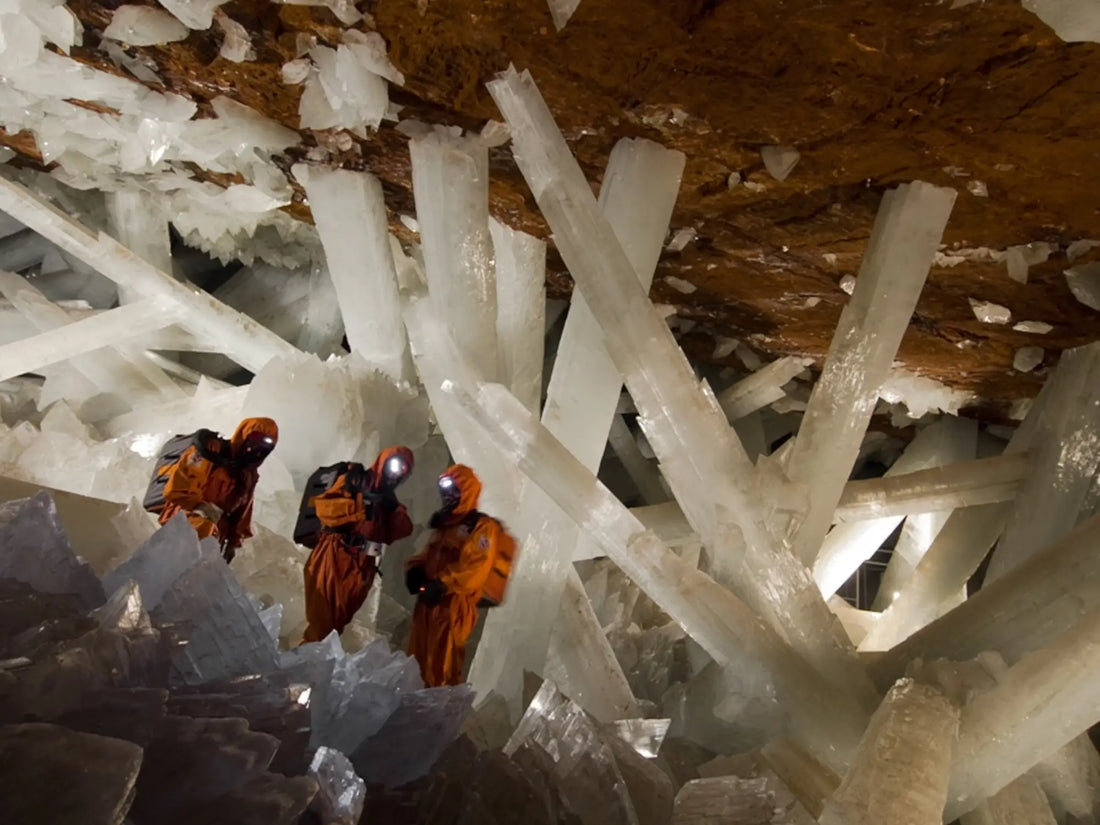
Formation, deposits, and unique features of the Alps and South Tyrol
Share
by Sophia Klement
Minerals are true wonders of nature, formed through geological processes that date back millions of years. In this blog article, you’ll learn how minerals are created, which typical minerals and deposits can be found in the Alps and South Tyrol, and why these fascinating natural treasures captivate not only geologists but also collectors.
How It All Began: The Passion of a Collector
For my father, Markus Klement, the journey into the fascinating world of minerals began with a special moment. His first discovery was a Teis geode, which he found on the very first day of his search in Teis — a rare find that immediately revealed the magical nature of these natural treasures. He was accompanied by his colleague and mentor, Paul Fischnaller, whose enthusiasm and expertise served as a great source of inspiration.
This discovery sparked not only joy but also a curiosity in Markus that never left him. From those early excursions in South Tyrol to trips through the Ahrntal, the Zillertal Alps, and even to Idar-Oberstein — the search for minerals became his passion. One of his most unforgettable moments was the discovery of a rock crystal pocket in the ice bridge near Pfunders — a magical experience filled with joy and awe for nature.
How Are Minerals Formed?
The formation of minerals can be divided into three main categories, based on the geological processes involved:
1. Magmatic Processes
Minerals form through the crystallization of molten rock (magma). As the magma cools, atoms and ions bond together and form crystals. These often grow in open cavities within the rock, where there is enough space to develop.
2. Metamorphic Processes
Under high pressure and temperature deep in the Earth’s crust, existing minerals undergo chemical transformation and take on new structures — for example, garnet or epidote.
3. Sedimentary Processes
Minerals such as calcite or quartz form through chemical precipitation from aqueous solutions. These processes often occur through water evaporation or other chemical reactions.
Minerals in the Alps: Treasures of the Mountains
The Alps are one of the richest mineral regions in Europe. The folding of the Alps around 14 to 18 million years ago created the geological conditions that led to an astonishing diversity of minerals.
Common Minerals in the Alps
• Quartz – The most common crystal, known for its clarity and hardness.
• Adularia (Moonstone) – Highly sought after for its shimmering effect.
• Garnet – A colorful mineral, most often in red, but also rarely found in green.
• Amethyst – The violet variety of quartz, prized for its beauty.
Typical Deposits
• Fissures and cavities – Ideal growth conditions for large crystals.
• Granite and limestone – Particularly mineral-rich types of rock.
• Special regions – The Tauern Window and the Mont Blanc massif are known for their mineral diversity.
South Tyrol: Home to Unique Mineral Treasures
South Tyrol is known for its exceptional mineral sites and rare finds. Especially remarkable are the Teis geodes — rounded rocks filled with quartz and amethyst, formed by volcanic activity some 280 million years ago.
Popular Minerals in South Tyrol
• Rock crystals and smoky quartz
• Amethyst
• Calcite
My father often speaks about his excursions to famous locations like the Seiser Alm or the Passeier Valley — experiences that constantly fueled his passion. The moment when the first sparkling crystals emerge in a fissure is, for him, indescribable — a moment that makes everyday worries simply disappear.
The Magic of Collecting
Mineral collecting is a hobby that not only requires knowledge and patience but also deepens your connection to nature. With the right tools — hammer, chisel, and a trained eye — every outing becomes an adventure. However, respect and mindfulness are essential: in South Tyrol, collecting minerals is only permitted with official authorization, and safety must always come first.
Conclusion: A Legacy of Nature
From my father’s first Teis geode to the many specimens we now showcase at our Mineral Hotel, each mineral tells its own story — a story of millions of years of Earth history, of immense forces and perfect conditions that had to come together to create these natural treasures.
So next time you hold a crystal in your hand, remember: you’re not just holding a beautiful stone — you’re holding a piece of Earth’s history, formed over millions of years in its own tiny chamber — a mineral pocket.
Let yourself be inspired by the magic of these unique natural wonders, and discover your personal connection to the fascinating world of minerals — whether in our Mineral Hotel or through our online shop.
